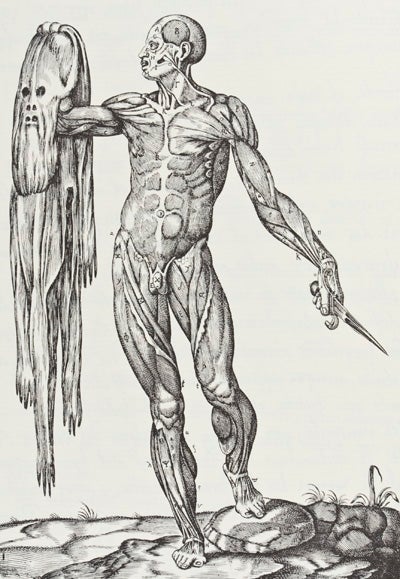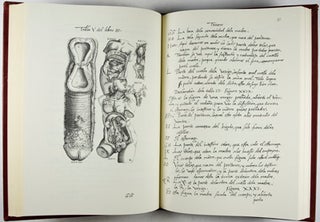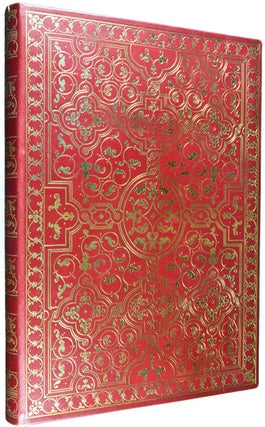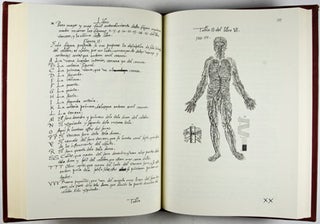Vivas figuras delas partes del cuerpo humano, impressas en moldes de metal conel epitome de Andres Vesalio, donde se contiene en summa la historia dela fabrica del cuerpo del hõbre: y con otro libro de Diego Greuino dela mesma materia traduzido todo...
Brussels: Coleccion "Medicinae Historia" 1970. Reprint. Hardcover. Elephant folio. 200 leaves. Original full red leather with elaborate gold tooling on boards and spine. Exquisite edition being a facsimile of a 1576 manuscript by Juan de Valverde. This early anatomic work is profusely illustrated with numerous illustrations of the human body, organs and skeleton. Corners and head and tail of spine slightly rubbed. Tiny closed tear at head of spine. Text in Spanish. Binding in overall good to very good, interior in fine condition. vg. Item #25429
About the author: Juan Valverde de Amusco (or "de Hamusco") (c. 1525-?) was born in the Kingdom of Leon in what is now Spain in about the year 1525 and studied medicine in Padua and Rome under Realdo Columbo and Bartolomeo Eustachi. He published several works on anatomy, including De animi et corporis sanitate tuenda libellus (Paris, 1552). Valverde's most famous work was Historia de la composicion del cuerpo humano, first published in Rome, 1556. All but four of its 42 engraved copperplate illustrations were taken almost directly from Andreas Vesalius's De humani corporis fabrica. Vesalius bitterly commented on Valverde's plagiarism, accusing him of having performed very few dissections himself. Occasionally, however, Valverde corrected Vesalius' images, as in his depictions of the muscles of the eyes, nose, and larynx. One of Valverde's most striking original plates is that of a muscle figure holding his own skin in one hand and a knife in the other, which has been likened to Saint Bartholomew in The Last Judgment (Michelangelo) of the Sistine Chapel. The original illustrations were most likely drawn by Gaspar Becerra (1520-1570), a contemporary of Michelangelo, and the copperplate engravings are thought to have been carried out by Nicolas Beatrizet (1507?-1570?), whose initials "NB" appear on several of the plates.
Price: $300.00




